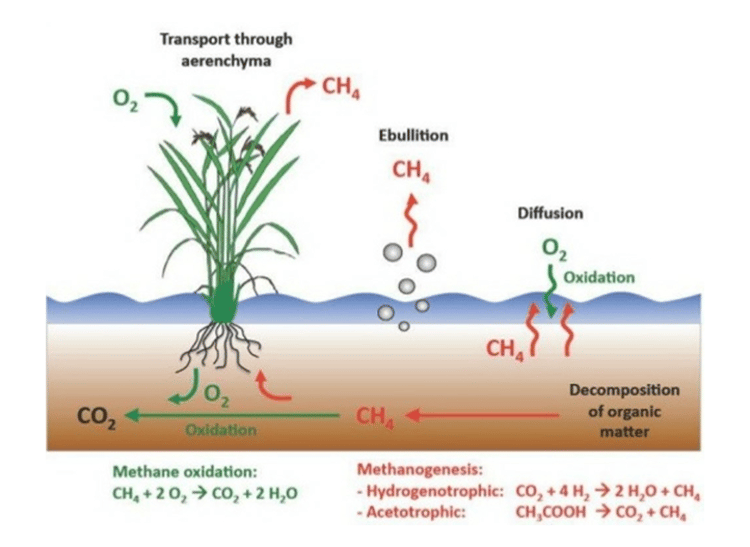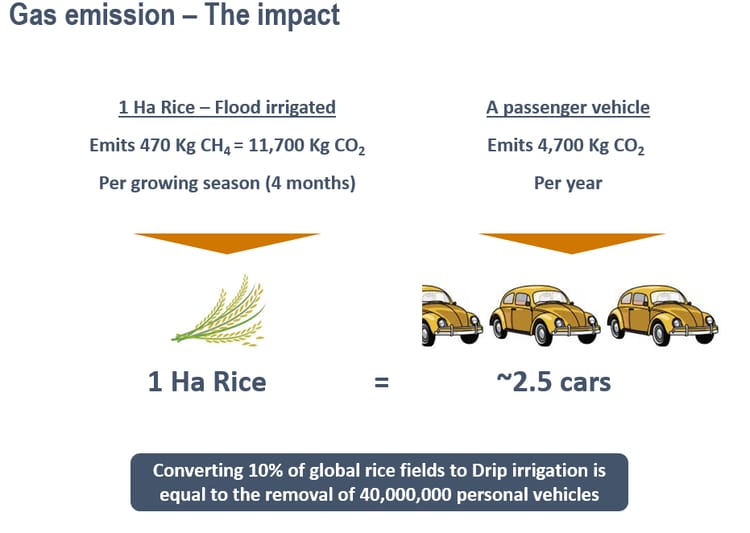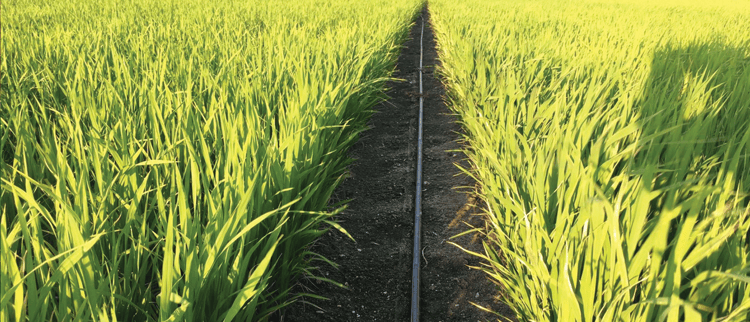Grow More Rice, Less Methane
Rice is a major staple food crop in the developing world, particularly in the Asia-Pacific region and the way it is grown has significant impact on Global warming. This poses a double challenge of increasing production to feed the growing population on one hand while reducing greenhouse gas emissions on the other hand.
How is rice tradionally grown?
Traditionally rice paddies are irrigated with cycles of flooding followed by dry periods. The dominant greenhouse gas emitted from flooded rice fields is methane produced by bacteria in the waterlogged soil in large quantities. However, there is another gas, Nitrous oxide, which is also produced by soil microbes in rice fields.
Methane gas is produced by the decomposition of organic matter under anaerobic conditions or flooded rice fields and released to the atmosphere whereas in aerobic conditions it is absorbed in the soil.
Impact of Methane gas emission

Figure 1: Gas Emission process
We measured CH4 emission at the 10th minute point in a closed chamber.

Figure 2: CH4 emission test results
Our study revealed that emission of CH4 is more in paddy rice , i.e 55 ppm compared to 5 ppm in drip irrigated rice.
Look at these statistics of the impact of Methane gas emission.

Figure 3: Greenhouse gas emission impact
According to US-based advocacy group Environmental Defense Fund (EDF), methane and nitrous oxide emissions from rice farms could have the same short-term warming impact as about 600 coal plants (1,900 MMT per year CO2e100).
With the looming global warming crisis, can we afford to have more greenhouse gas emissions? The question lies in how we can effectively mitigate greenhouse emissions from rice paddy fields without compromising yield.
How to reduce greenhouse gas emissions
The answer lies in adopting a more integrated approach to rice paddy irrigation and fertilizer application to significantly reduce greenhouse emissions. Many studies have shown that some rice varieties can be successfully grown under much drier conditions than traditional methods, with reduced methane emissions and without any loss in yield.


